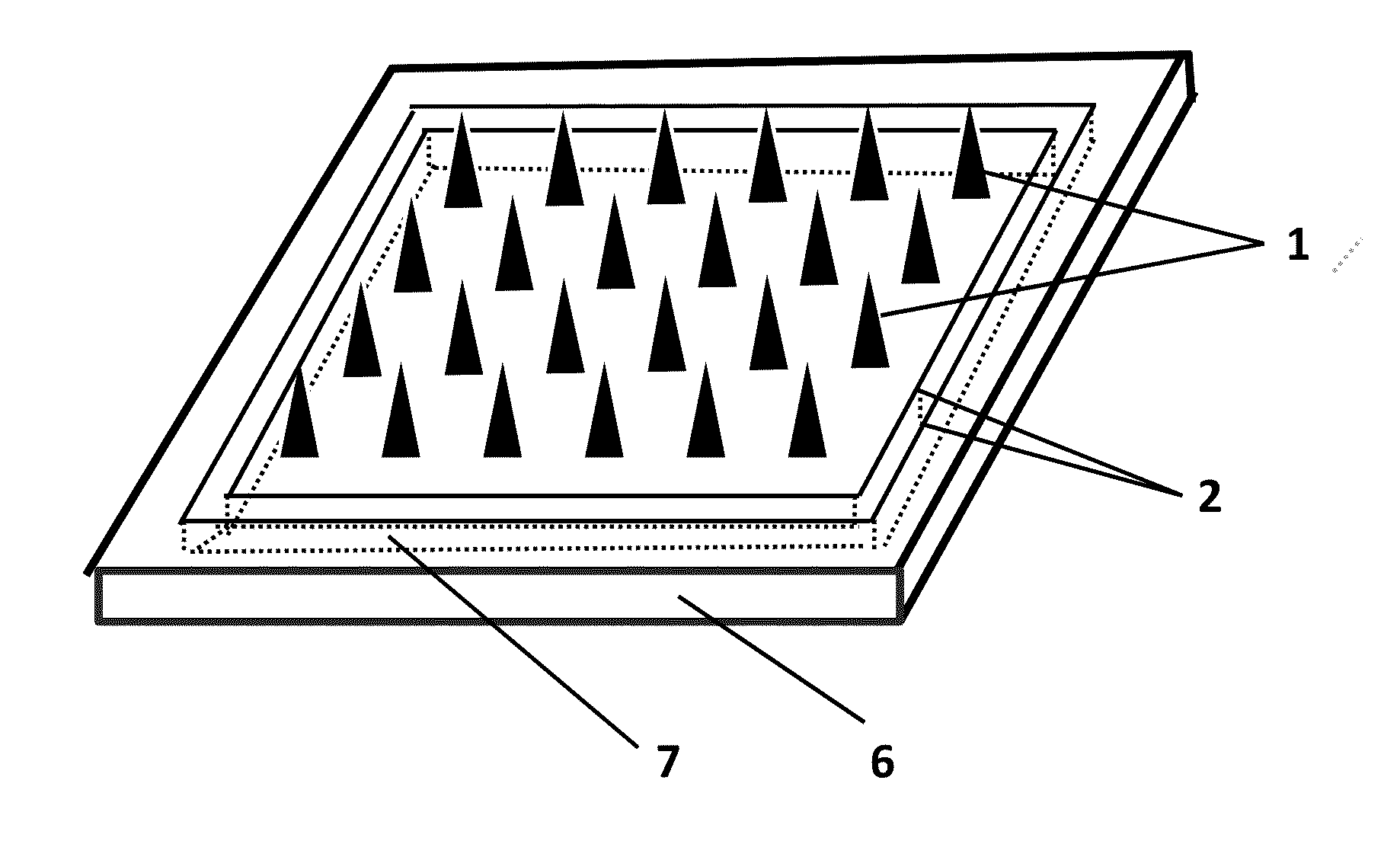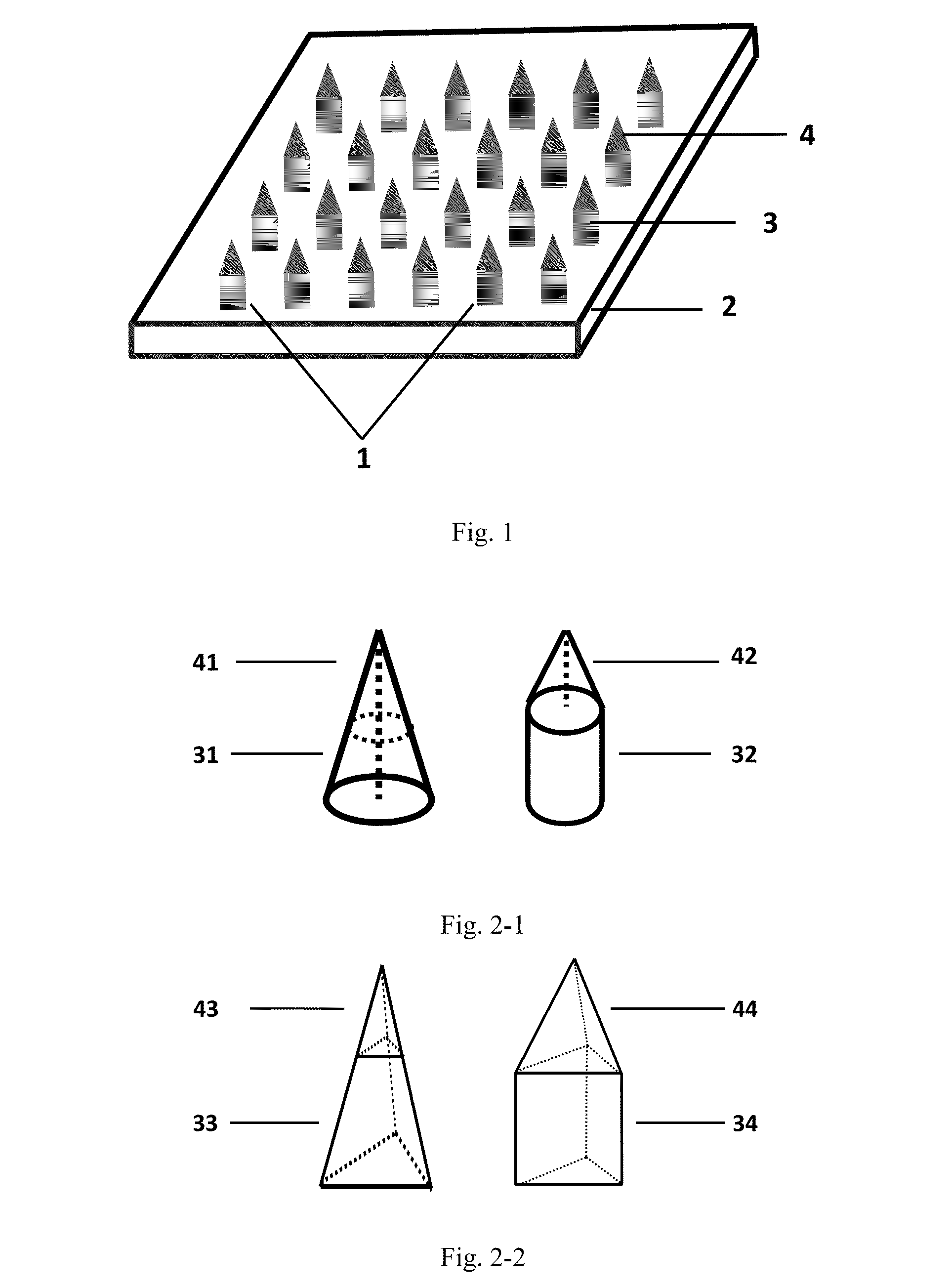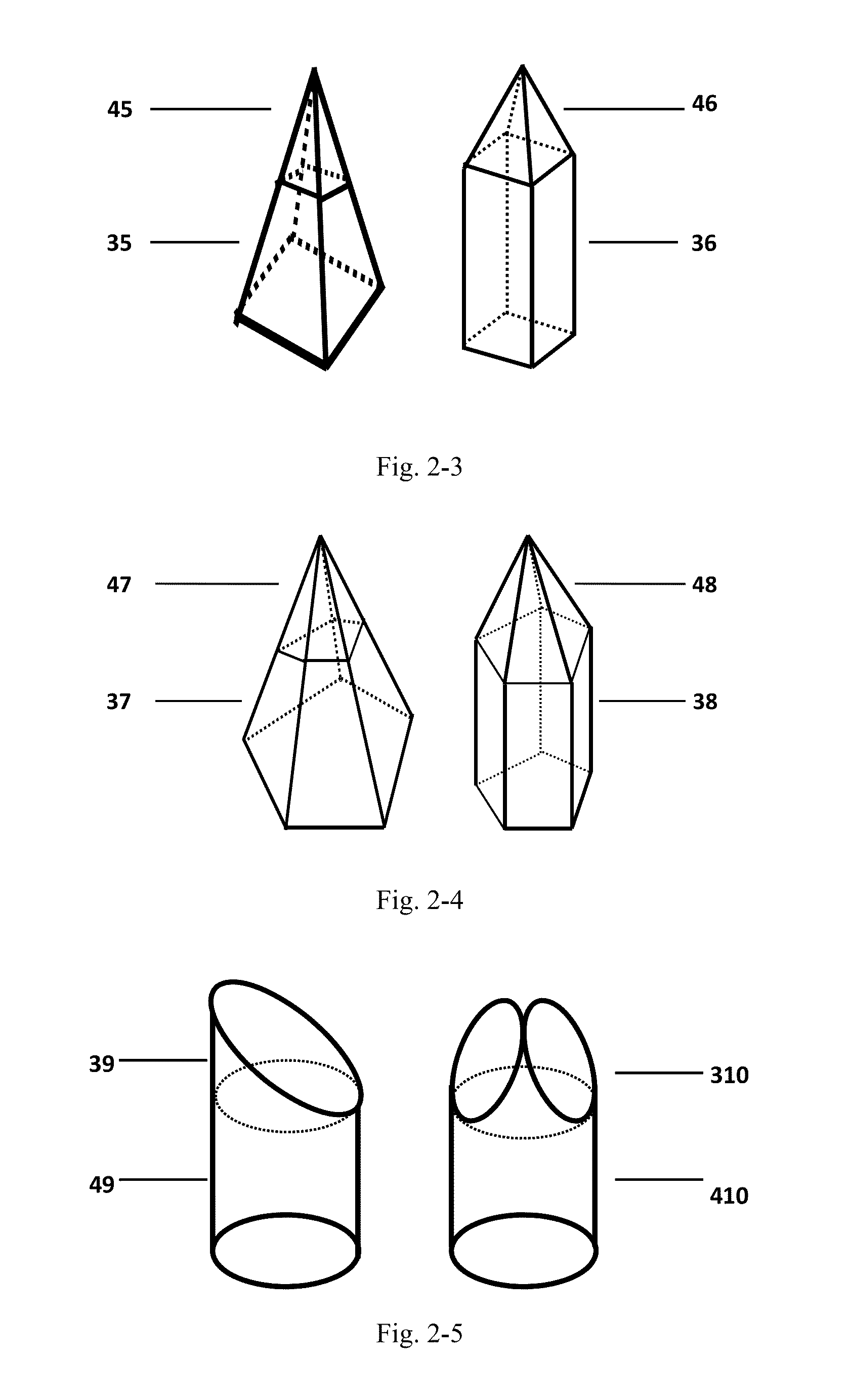Polymer micro-needle array chip, preparation process and use thereof
a technology of polymer microneedle array and polymer microneedle, which is applied in the field of biomedical materials and micromachining, can solve the problems of high cost, limited clinical application, and brittleness, and achieves the effects of easy piercing, easy dissolution or swelling, and high mechanical strength
- Summary
- Abstract
- Description
- Claims
- Application Information
AI Technical Summary
Benefits of technology
Problems solved by technology
Method used
Image
Examples
example 1
[0310]According to the volume ratio of 2:5:10:83, 100 mL of water, ethanol, acetone and isopropanol were added to in turn three necked round bottom flask with the 250 mL comprising a mixing flow condenser, a thermometer and a nitrogen introducing device, using a magnetic stirrer to mix them uniformly; acrylamide monomer of 10.66 g was added to the system continuously with stirring to make it dissolved; nitrogen was added to the system, and the target temperature was set to 60° C. with water bath heating; 107 mg of 2,2-azobisisobutyronitrile was dissolved in 10 mL of isopropanol and mixed uniformly to dissolve thoroughly. 1 mL of isopropanol with 2,2-azobisisobutyronitrile was added to the system when the temperature of the reaction system reached to the target temperature 60° C., kept the reaction for 15 hours with stirring and the high purity nitrogen introduced continuously;
[0311]After reaction, the reaction system was cooled and solid-liquid of the reaction system were separated ...
example 2
[0314]The method of example 1 was repeated except that the volume ratio of water, ethanol, acetone and isopropanol was 5:5:10:80. The residual amount of acrylamide monomer in polymer was measured by SHIMADZU liquid chromatograph (LC-20A / SPD-20AV), the measured value was not more than 0.5 ppm. According to GB 17514-2008 method and static light scattering method (Wyatt DAWN HELEOS-II), the molecular weight was measured; the measured value of molecular weight of obtained polymer was 1.35×105. According to the standard of GB / T4340.2, Vickers hardness of corresponding bulk material was about 300 HV. According to the standard of D-256 of US ATSM, the impact strength was about 25 J / m.
example 3
[0315]The method of example 1 was repeated except that the volume ratio of water, ethanol, acetone and isopropanol was 10:5:10:80. The residual amount of acrylamide monomer in polymer was measured by SHIMADZU liquid chromatograph (LC-20A / SPD-20AV), the measured value was not more than 0.5 ppm. According to GB 17514-2008 method and static light scattering method (Wyatt DAWN HELEOS-II), the molecular weight was measured; the measured value of molecular weight of obtained polymer was 2.0×105. According to the standard of GB / T4340.2, Vickers hardness of corresponding bulk material was about 150 HV. According to the standard of D-256 of US ATSM, the impact strength was about 30 J / m.
[0316]Examples 1, 4-6 were used to illustrate the effect of initial concentration of acrylamide monomer on the reaction of polymerization of acrylamide.
PUM
| Property | Measurement | Unit |
|---|---|---|
| Vickers hardness | aaaaa | aaaaa |
| length | aaaaa | aaaaa |
| thickness | aaaaa | aaaaa |
Abstract
Description
Claims
Application Information
 Login to View More
Login to View More - R&D
- Intellectual Property
- Life Sciences
- Materials
- Tech Scout
- Unparalleled Data Quality
- Higher Quality Content
- 60% Fewer Hallucinations
Browse by: Latest US Patents, China's latest patents, Technical Efficacy Thesaurus, Application Domain, Technology Topic, Popular Technical Reports.
© 2025 PatSnap. All rights reserved.Legal|Privacy policy|Modern Slavery Act Transparency Statement|Sitemap|About US| Contact US: help@patsnap.com



